

Not everyone needs a high-end mountain bike that breaks the bank. If you're new to the sport or ride infrequently, cheaper trail bikes offer plenty of performance and room to grow as a rider. The budget bikes below share a common formula: 27.5-inch or 29-inch wheels, adequate suspension for rough trails, and decent components. You can expect to make some sacrifices by saving, but there are plenty of solid options at or under $1,500 that leave room to upgrade as you progress. Keep in mind that hardtails will offer the best bang for your buck, but some full-suspension models are competitive enough to be included below. For more background information, see our comparison table and buying advice below the picks, as well as details about our testing process.
Editor’s note: We updated this guide on July 30, 2025, to remove discontinued models and to add the Co-op Cycles DRT 1.1 as an option for tighter budgets.
 Suspension: 130mm (front)
Suspension: 130mm (front)
Tires: 29 x 2.5/2.4 in.
Gears: 1 x 10
Dropper post: Yes
What we like: All the fixings of a great starter bike with ample room to upgrade.
What we don’t: Not our favorite dropper post design.
From high-end racing models to capable gravel grinders, Cannondale’s been pioneering bikes for more than five decades. And they’ve put together a stellar budget trail offering in their Habit HT 2. For $1,299, you get a dropper post, burly 29-inch tires, a healthy 130 millimeters of front suspension, and a well-engineered frame designed for aggressive riding—especially when the going gets steep. The drivetrain is 1 x 10, which offers fewer gears than many high-end builds, but it’s realistically enough for most riders. A final selling point is that the Habit is available at REI, which makes it easier to find the right fit and test the bike before you buy (however, at the time of publishing, REI only has the older model, which is more expensive).
As is typical for mountain bikes in this price range, the Habit isn’t the best choice for fast-and-light races or double-black trails at your local bike park. However, it’s a capable all-rounder that will allow you to hone your skills without holding you back on most terrain. We do have one (relatively minor) design-related nitpick: At 130 millimeters of fork travel on large and extra-large frames, the dropper post doesn’t get out of the way as much as we’d prefer, although it’s a very easy part to upgrade. All told, the Habit HT 2 checks all the boxes we look for in an affordable build, including good all-around capabilities and plenty of room for upgrades as you progress.
See the Cannondale Habit HT 2
 Suspension: 120mm (front), 120mm (rear)
Suspension: 120mm (front), 120mm (rear)
Tires: 27.5 x 2.25 in. (S-M), 29 x 2.25 in. (M-XL)
Gears: 1 x 10
Dropper post: Yes
What we like: Solid geometry and frame, confidence-inspiring parts, easy to upgrade.
What we don’t: Middling front fork; consumer-direct model means you order blind.
Finding a reliable full-suspension bike for $1,500 is a tall order, but consumer-direct powerhouse Polygon has put together a compelling build with their Siskiu D6. First and foremost, it's important to note that any bike at this price point could use some upgrades to handle truly challenging terrain, but the Siskiu's frame is solid—it even comes stock with a dropper post. The D6 also features a “boost” fork that allows for future upgrades without changing the front wheel (at this price point, upgrading the fork might be top of mind as you progress). Added up, the Siskiu D6 will satisfy beginner and intermediate riders with ambitions of tackling tough and steep trails, though the stock build is best suited for moderate terrain.
Like the Habit HT 2 above, the Siskiu D6 could use a couple more gears to keep trucking up steep hills. Slightly thicker tires wouldn't hurt, either. While purely subjective, we also aren't huge fans of the bike's "bumblebee"-esque colorway, but to each their own. Finally, Polygon's consumer-direct model is a bit of a double-edged sword: You save some serious cash by cutting out the middleman, but you won't get the luxury of trying the bike out before purchase. But the $1,199 price point makes us feel better about ordering blind, and there's simply no denying the all-around value. If you're set on having both front and rear suspension, the Siskiu D6 handily gets our vote.
See the Polygon Siskiu D6
 Suspension: 100mm (front)
Suspension: 100mm (front)
Tires: 27.5 x 2.1 in. (XS-S), 29 x 2.1 in. (M-XL)
Gears: 2 x 8
Dropper post: No
What we like: Enough to get started at a really great price point and upgrade compatible.
What we don’t: Cheaper components and fabrication compared to more expensive bikes; only 100mm of front fork travel.
The bar to entry with mountain biking can not only be intimidating—it can be a dealbreaker entirely. Often, the best way to get started is by buying used, but this can be scary if you don't know what to look for or what questions to ask. We're thankful that REI's Co-op Cycles offers some really decent bikes at prices almost unheard of in the trail bike world. Their entry-level DRT 1.1 is just $629 and can be a great choice for someone just getting started. With reputable components, dropper-post compatibility, and a tapered head tube that will allow you to upgrade your fork, the DRT 1.1 has more room to grow with your skill level than any other entry-level hardtail we've come across. And if you're an REI member, you're protected by a full year return window (e-bikes not included), as well as 20% off services at their in-house bike shop.
It will come as no surprise that you make some concessions with a bike this cheap. Some users have reported issues with various components, and a budding rider will quickly outgrow the 100mm of suspension travel. While you can upgrade your fork and other parts, the added costs may make the DRT 1.1 slightly less appealing. If you know you love mountain biking and plan to stick with it, it may be worth spending up a bit to avoid outgrowing your bike right away—the DRT 1.2 sells for $999 and is a step up in most respects. But if you aren't sure or just want something to get around on the dirt occasionally, this is a great option that we're glad is on the market.
See the Co-op Cycles DRT 1.1
 Suspension: 120mm (front)
Suspension: 120mm (front)
Tires: 29 x 2.6 in.
Gears: 1 x 11
Dropper post: No
What we like: No-nonsense build with a steel frame and lots of bikepacking mounts.
What we don’t: Underbuilt for charging over truly technical terrain; no dropper post.
A lot of folks interested in a budget mountain bike are looking for a rig that can take them on long missions into the backcountry—from pavement to gravel to rugged singletrack. With a sturdy steel frame, sleek retro-meets-modern styling, and more bikepacking attachment points than most riders could ever need, Marin’s Pine Mountain 1 fits the bill to a T. The bike’s confidence-inspiring 29-inch wheels and meaty, 2.6-inch-wide tires keep you firmly connected to the ground, while the 66.5-degree head tube angle offers a nice balance between low-speed handling and high-speed stability. If you’re in the market for a bikepacking-ready design that can take you far off the beaten path across a wide variety of terrain, the Pine Mountain is our top choice.
What’s not to like with the Marin Pine Mountain 1? First, it lacks a dropper post, which we consider critical when moving fast over variable terrain. To be fair, several bikes here, including the Co-op Cycles DRT 1.3 below, feature droppers with so little travel that you’ll likely want to upgrade quickly, anyways. The Marin’s straight aluminum handlebars also do little to absorb impacts, and it’s noticeably less modern and aggressive than alternatives like the Cannondale Habit and Marin’s own San Quentin 2 above. In other words, if steep and rocky rides are what you’re after, we’d point you elsewhere. But for hauling the essentials on long and remote missions, the Pine Mountain is a very well-built and versatile option.
See the Marin Pine Mountain 1
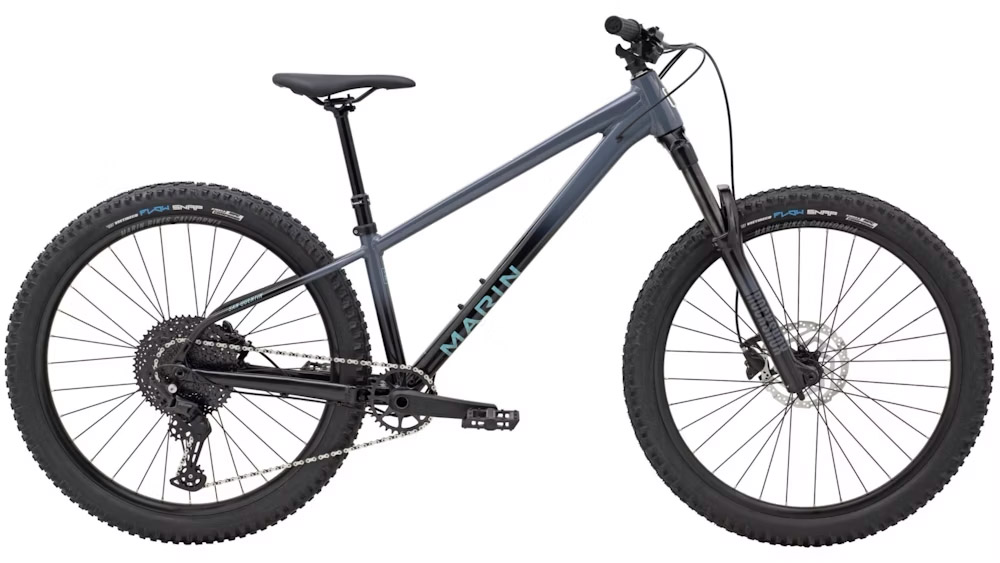 Suspension: 140mm (front)
Suspension: 140mm (front)
Tires: 27.5 x 2.6 in.
Gears: 1 x 11
Dropper post: Yes
What we like: Plenty of play and beats the Cannondale above in a couple of areas.
What we don’t: Tires don’t come tubeless-ready.
California-based Marin’s motto is “made for fun,” and their budget-friendly San Quentin 27.5" 2 hardtail embodies that ethos. This bike features playful and maneuverable 27.5-inch tires and a modern frame that’s well suited for aggressive riding—whether you’re shooting down a rocky descent or climbing back up (although the slack head tube angle translates to a slight preference for the former). You also get a respectable Shimano Deore 11-speed drivetrain, a rear thru-axle for added stiffness and security (it also makes for easier upgrades), and a dropper post with a good amount of travel.
The San Quentin 2 goes head-to-head with the Habit HT 2 above, and it wasn’t an easy decision ranking the Cannondale higher. In parsing out the differences, the Marin has an additional 10 millimeters of travel for smoothing out bumps. On the flip side, the Habit boasts larger 29-inch tires, which we feel are a better match for beginner riders due to their added stability and more planted feel (although the Marin’s tires are a little wider). We also wish the San Quentin’s tires came tubeless-ready, as that’s one of the first upgrades that many riders make. Finally, the widespread availability of the Habit makes it easier to try out in person and fine-tune your fit before buying. That said, if you prefer the playfulness of a 27.5-inch setup and don’t plan to go tubeless right away, the San Quentin is a competitive and similarly priced alternative.
See the Marin San Quentin 27.5" 2
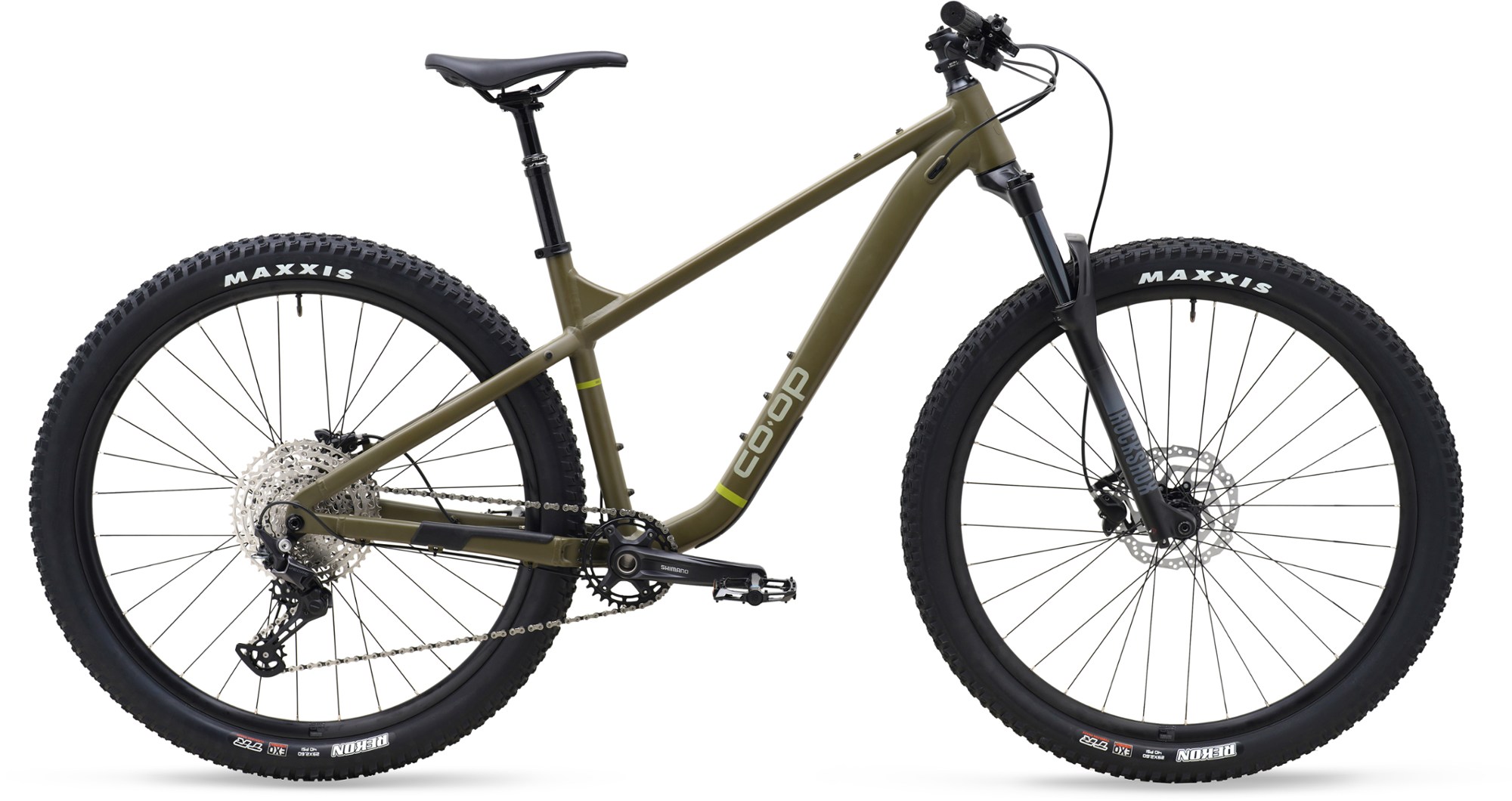 Suspension: 120mm (front)
Suspension: 120mm (front)
Tires: 27.5 x 2.4 in. (XS-S), 29 x 2.4 in. (M-XL)
Gears: 1 x 12
Dropper post: Yes
What we like: A capable and well-priced option for mellow to moderate terrain; REI members get a lot of added benefits.
What we don’t: Not the best option for those looking to find—and eventually push—their limits.
Not everybody needs the aggressive, modern geometry of hardtails like the Habit and San Quentin above. For those more interested in cruising mellow to moderate terrain than pushing their limits out of the gate, a basic frame will certainly get the job done—and that’s where Co-op Cycles’ DRT 1.3 shines. While relatively basic in terms of components and geometry, the 12-speed Shimano Deore drivetrain is capable of covering a wide range of terrain; you get helpful features like a dropper post, hydraulic disc brakes, and front and rear thru-axles; and the rims and tires come tubeless-ready for easy upgradeability. All told, it’s a smooth, easy-handling bike that’s much more performance-ready than Co-op Cycles’ cheaper DRT 1.1 above ($629) and DRT 1.2 ($999) models.
In addition to being widely available at REI stores throughout the country, co-op members also get tons of benefits, including in-store bike assembly, a year of free adjustments, 20% off shop services, and more. A lifetime membership will run you $30, but a single bike purchase will easily offset that cost (if you purchase at full price, you'll get 10% back in annual dividends). Again, the DRT 1.3 isn’t as well suited for rough and steep terrain as the Habit or San Quentin 2 above, and many folks will opt to upgrade components like the tires, dropper post, and pedals, which will almost certainly push you over the $1,500 threshold. But if you’re just starting out and don’t plan to get too rowdy, the DRT 1.3 offers a solid amount of bang for your buck—especially if you take advantage of REI’s member benefits.
See the Co-op Cycle DRT 1.3
 Suspension: 120mm (front), 120mm (rear)
Suspension: 120mm (front), 120mm (rear)
Tires: 27.5 x 2.6 in.
Gears: 1 x 10
Dropper post: Yes
What we like: Not overly compromised for a budget-friendly full-suspension rig.
What we don’t: Riders looking to get rowdy will want more squish as they progress.
Giant is, well, a giant in the world of mountain biking, so it’s no surprise that they offer some hard-to-beat options for casual riders and those just starting out. Released in 2022, their entry-level Stance is technically a dated offering that’s since been overshadowed by newer, more expensive variations in the collection, but we still consider it a perfectly capable starter rig for those wanting full squish. Like the Polygon Siskiu D6 above, the Stance’s 120 millimeters of travel falls short for hardcore dropping and bashing, but it will do the trick for most recreational riders with a relatively forgiving, confidence-inspiring feel on rocky and rooty terrain. For those looking for a little more stability and traction, Giant also offers a 29er version for the same price.
Our biggest complaint about the Stance is its geometry: It’s noticeably less aggressive and what mountain bikers love to call “modern” than other bikes on this list. But riding style and fit are highly personalized and subjective, and if you’re after a flowy ride on moderate trails, the Stance is a great option to have on your radar. If you’re willing to forgo rear suspension, it’s also worth checking out Giant’s Fathom 2 hardtail, which retails for $1,500 but is currently on sale for $1,200. Hardtails are almost always the better value when compared to full-suspension rigs at the same price point, but in this case, we consider the Stance an entirely viable alternative for those set on a rear shock.
See the Giant Stance
 Suspension: 120mm (front)
Suspension: 120mm (front)
Tires: 29 x 2.6 in.
Gears: 1 x 10
Dropper post: Yes
What we like: Quality build for bikepacking on relatively mellow terrain.
What we don’t: Lack of upgradeability in some areas and inferior frame to the more aggressive options above.
Salsa’s made a name for themselves for both budget and bikepacking options—and with the Rangefinder you get both. Like the Co-op Cycles offerings above, this bike features more or less the same entry-level front fork—Suntour’s basic XCM—as the Siskiu above. And one of the biggest benefits here is that the bike is available at REI, so riders can try it out and tailor the size, fit, and ride to their body, along with the other benefits of purchasing through REI that we mentioned above.
Why the last-place finish for the Salsa Rangefinder? One complaint is the frame, which is noticeably inferior to the options above for tackling steep and rough terrain. However, our biggest gripe is that the bike doesn’t feature tubeless-ready tires or a rear thru-axle, which makes it tougher to upgrade as you progress. It also doesn't come with a dropper post, though you can upgrade to one. These things may not be a dealbreaker for casual riders who plan to run a stock setup out of the gate, but we consider the Marin Pine Mountain above to be the more capable and versatile all-around option, though it will cost you quite a bit more.
See the Salsa Rangefinder Deore 10 29er
| Bike | Price | Suspension | Tires | Gears | Dropper |
|---|---|---|---|---|---|
| Cannondale Habit HT 2 | $1,299 | 130mm (front) | 29 x 2.5/2.4 in. | 1 x 10 | Yes |
| Polygon Siskiu D6 | $1,199 | 120mm (front), 120mm (rear) | 29 x 2.25 in. (M-XL) | 1 x 10 | Yes |
| Co-op Cycles DRT 1.1 | $629 | 100mm (front) | 29 x 2.1 in. (M-XL) | 2 x 8 | No |
| Marin Pine Mountain 1 | $1,499 | 120mm (front) | 29 x 2.6 in. | 1 x 11 | No |
| Marin San Quentin 27.5" 2 | $1,399 | 140mm (front) | 27.5 x 2.6 in. | 1 x 11 | Yes |
| Co-op Cycles DRT 1.3 | $1,399 | 120mm (front) | 29 x 2.4 in. (M-XL) | 1 x 12 | Yes |
| Giant Stance | $1,400 | 120mm (front), 120mm (rear) | 27.5 x 2.6 in. | 1 x 10 | Yes |
| Salsa Rangefinder Deore | $1,099 | 120mm (front) | 29 x 2.6 in. | 1 x 10 | No |
From distant gravel adventures to rowdy singletrack, the Switchback Travel team loves getting out on two wheels. Former contributor Jamey Voss put together our initial selection of six sub-$1,000 mountain bikes in 2016, passing the torch to past editor-in-chief John Ellings in 2019. An avid mountain biker based in eastern Washington, John is a huge proponent of “lunch laps” and is on a bike any time his schedule—and the finnicky PNW weather—allows. Various members of our eclectic team have worked on this guide since 2024, overhauling the list to reflect rising bike prices (we upped the price threshold by $500) and massive improvements in technology, which have trickled down into the entry-level market. Contributor Heather Balogh Rochfort leads the charge in 2025 from her home base near Aspen, Colorado, a region known for its long climbs and high alpine riding.
The list of 8 budget-friendly bikes you see above is the result of our editors’ experiences on trails from mellow to technical, along with feedback from our gear-savvy freelancers and the online mountain biking community. In narrowing in on our top picks, we look at several factors. Along with a modern frame, the bikes that made our list all have decent drivetrains, capable front forks, and disc brakes out of the box—bonus points if they include a dropper post and rear thru-axle, too. Upgradeability is another key component, as many riders will opt to swap out tires, pedals, and other components as they progress. As the market continues to evolve, we’ll keep hitting the trails and amending the list above to reflect our favorites.
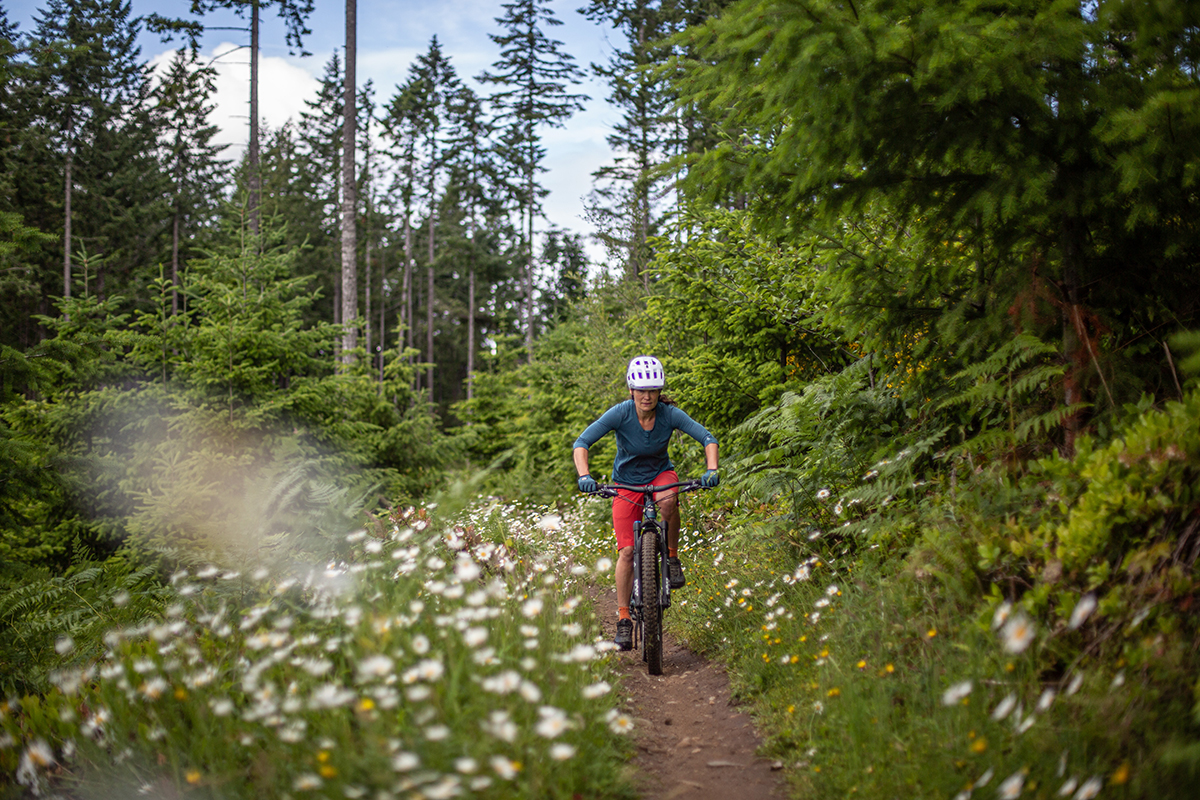
In the sub-$1,500 price range, there isn’t a lot of variety in frame materials, which isn’t necessarily a bad thing. All of the bikes above—with the lone exception of the steel Marin Pine Mountain 1—use aluminum, and the reasons are pretty simple: From a performance standpoint, a well-made aluminum frame is stiff enough to withstand rough trails and plenty durable to avoid significant damage in an average crash. Compromises in aluminum include ride quality—that stiffness comes with a slightly harsher feel and less bump absorption—and longevity. The welds required to put together an aluminum frame can crack over time, and the material itself fatigues faster than alternatives like steel and carbon fiber (although many aluminum frames last a decade or more).
Steel is another reasonably affordable frame material that’s well known for its strength and toughness. Compared with aluminum, steel bikes are even longer-lasting and better-equipped to withstand years of rough use. But it comes with a weight penalty and less of a playful and nimble feel, which is why you rarely see it on a budget-oriented mountain bike (again, Marin's Pine Mountain 1 above is the only exception). Finally, carbon fiber is a common choice among premium bikes and comes with benefits like less weight—typically about a pound less than an equivalent aluminum frame—a cleaner look with no welds, and smoother ride quality. That said, it’s substantially more expensive to manufacture, so you won’t find any options at this low price point (expect to pay $4,000 or more for carbon).
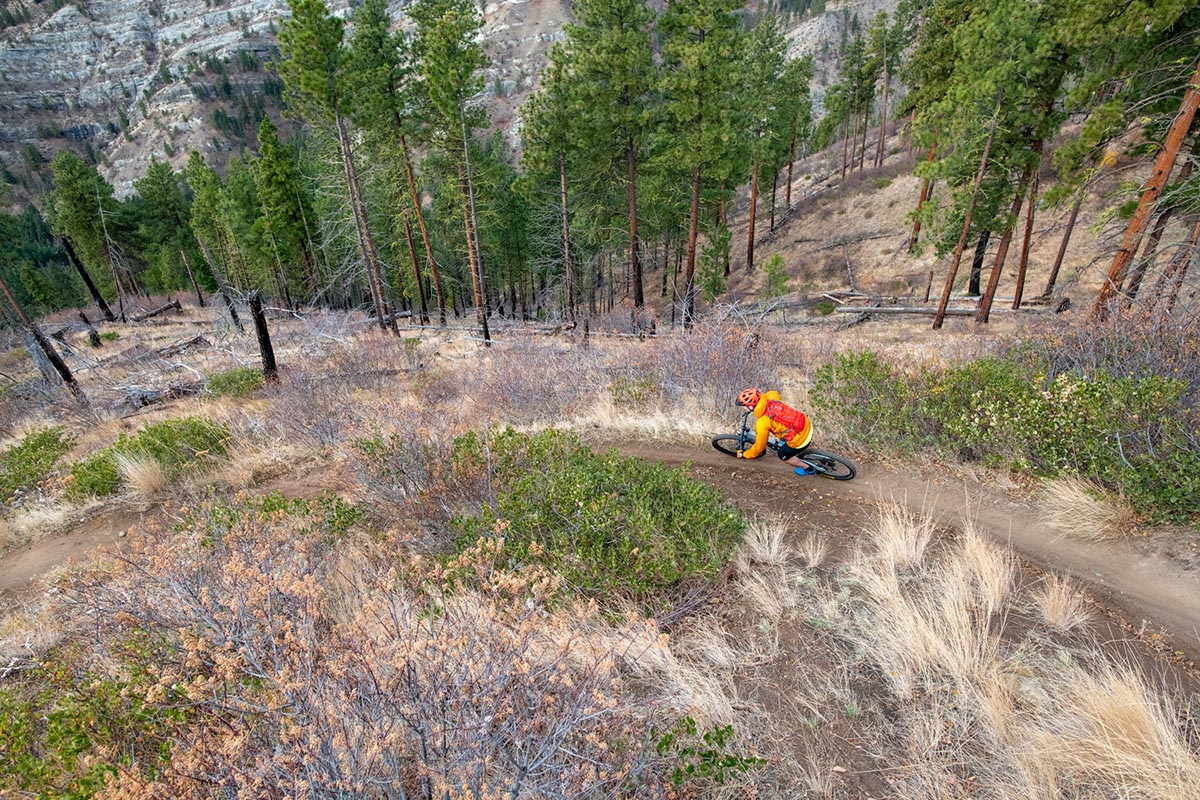
All of the bikes above can handle moderate terrain, which can include everything from smooth, rolling trails to rocks and roots galore. As a result, suspension range is relatively narrow, with front forks that offer between 120 and 140 millimeters of travel (a measurement of how much the shock absorbers can compress). At the low end are bikes like Co-op Cycles' DRT 1.3 and Salsa’s Rangefinder (both 120mm), which function a little better as cross-country workhorses than trail chargers. At the higher end is Marin's San Quentin 2, which boasts a generous 140 millimeters of travel. That added suspension (along with its aggressive frame style) means the Trek can handle rougher and bumpier terrain. It’s also worth pointing out that most options above are hardtails, which forgo spendy rear suspension and therefore generally offer better performance for the price. We’ve included a couple budget-friendly full-suspension rigs that are both capable and upgradeable, but if maximizing bang for your buck is a top priority, a hardtail is the way to go.
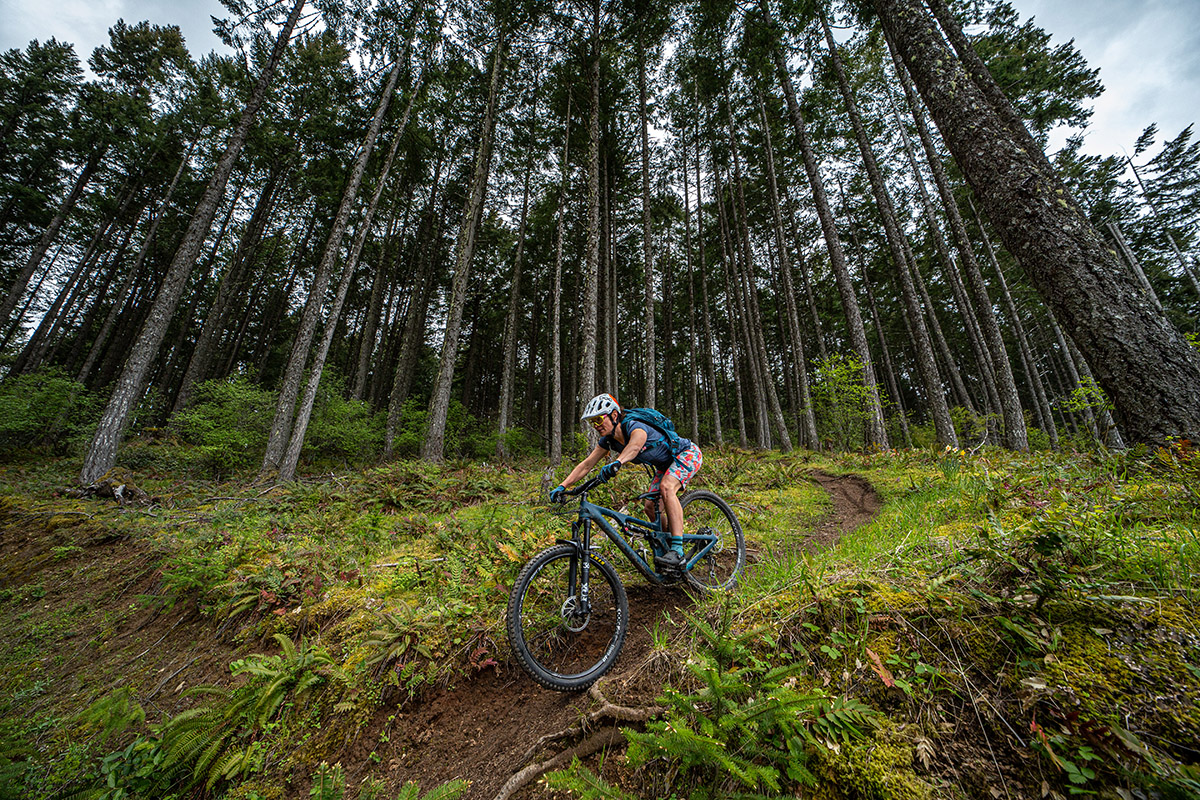
The old mountain bike standard, the 26-inch wheel and tire combo, has gone from being commonplace to a rarity. For budget bikes, the shift toward larger wheels started with 29-inch models, and while 27.5-inch wheels were once an alternative, they are becoming less common in new budget-friendly models.This wholesale shift in the industry can be traced to the improvement in rollover, traction, and stability that these larger tires provide (for more, see our article on 27.5 vs. 29er mountain bikes). In 2025, 29-inch wheels have become the standard for budget-friendly trail bikes, with 27.5-inch models becoming less common outside of select hardtails and small frame sizes. While 27.5-inch wheels are still quicker to turn, most budget-friendly bikes have moved to 29-inch wheels for better stability and rollover. If you’re looking for something more playful, you may need to seek out a leftover 27.5-inch model or consider a mullet setup (though those are rare under $1,500). Smaller riders may prefer the fit of the 27.5-inch design, and the opposite goes for tall folks on a 29er. As long as you get a proper size, we think both styles are a great match at this $1,500 price point — although 27.5 models are becoming less available.
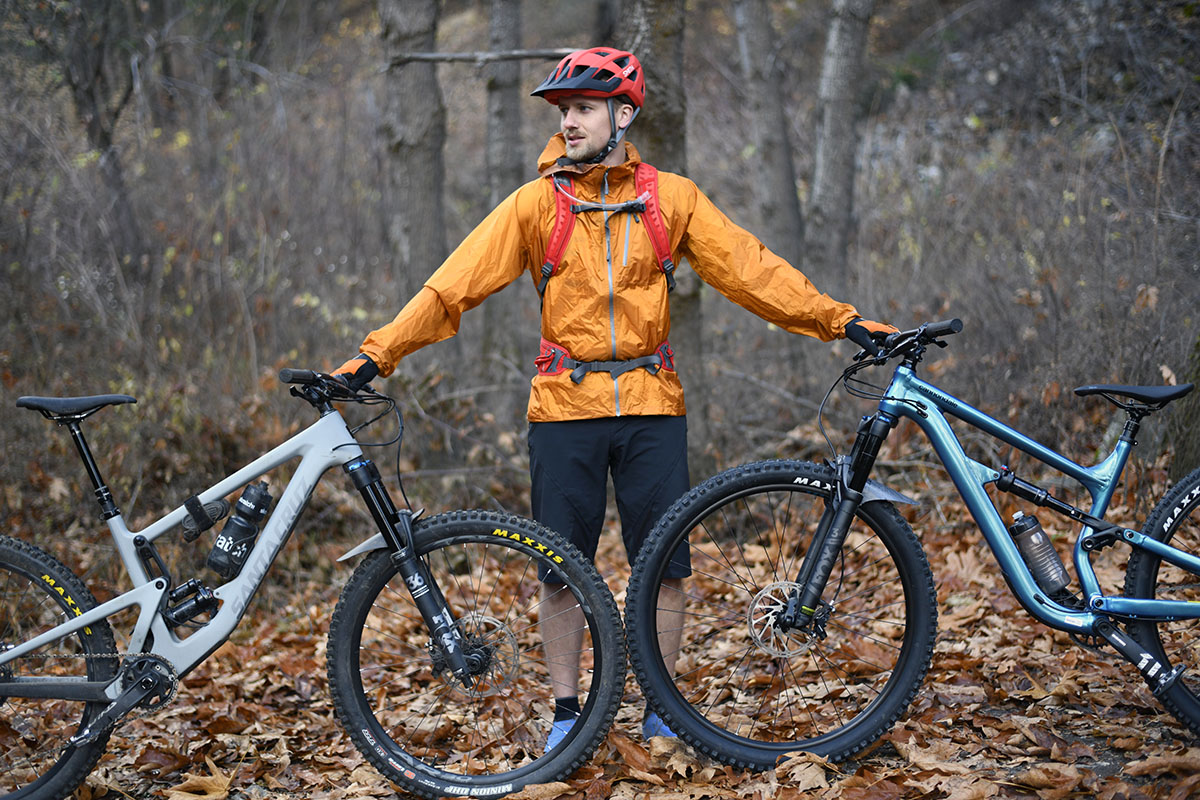
While on the topic, we’d be remiss not to touch on tubeless tires. Many of the options above come stock with tubeless-ready rims and tires, which are exactly as they sound: Going tubeless involves removing the inner tube and injecting sealant to plug any leaks and heal small punctures. In general, tubeless tires are more resilient to flats, allow you to run lower pressures for better traction, and have lower rolling resistance, which translates to more speed when compared with a standard setup. If you’ve never converted a bike to tubeless, we recommend getting it done by your local bike shop, as the process does take some finessing.
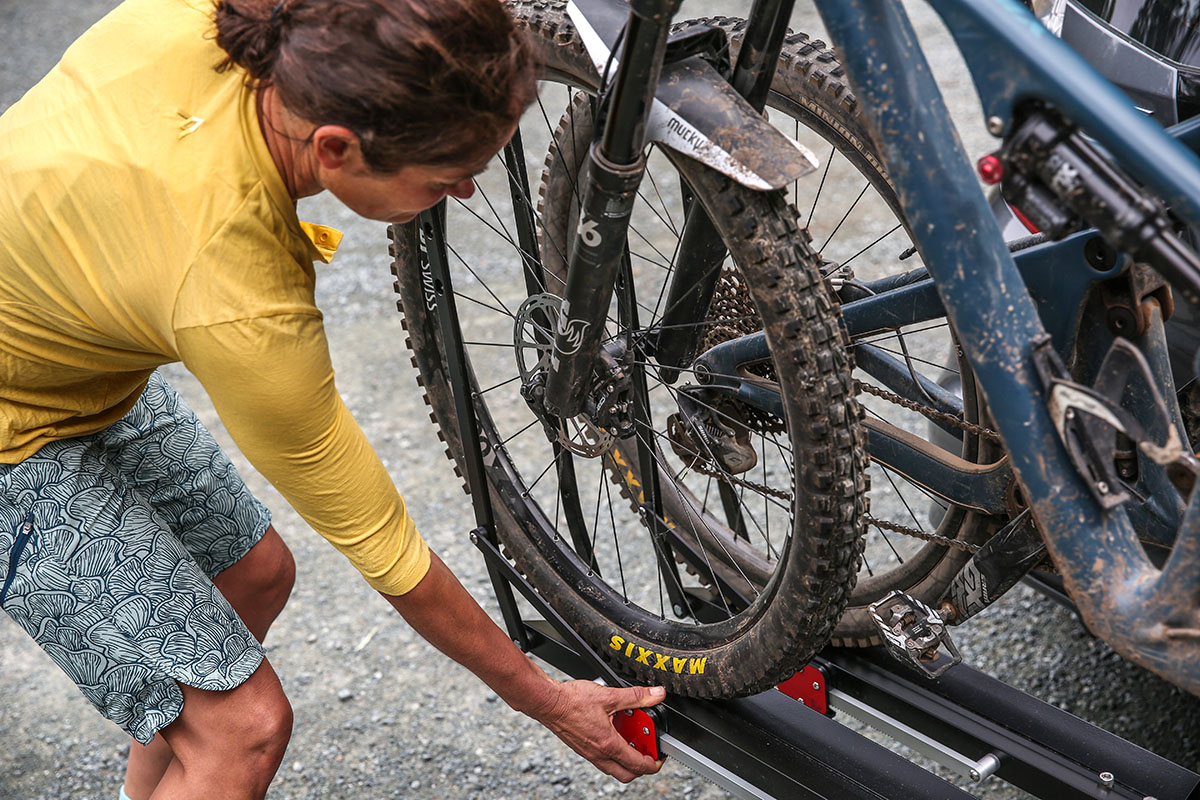
If you want a nimble and lightweight bike for under $1,500, we recommend keeping it simple: an aluminum frame, a front suspension fork, and 27.5-inch or 29-inch wheels. The closer you get to $1,500 with this setup, the lighter-weight and more responsive the bike will be. On average, these aluminum hardtails will hover around the 30-pound mark. As long as your expectations are reasonable (don’t expect a twitchy, feathery carbon race bike experience), you can have a whole lot of fun with a mid-range hardtail.
As the price goes down, the weight of the bike inevitably will go up. Everything from the crankset and drivetrain to handlebar and seat post gets heavier. And if you elect for a full-suspension bike like the Polygon Siskiu D6 at this price point, you can expect a pretty hefty bike. While it will undoubtedly be lighter than a bike made five to 10 years ago, the rear shock and linkage all add precious pounds to the bottom line. That said, it’s important to note that within a narrow price range like $1,000 to $1,500, bikes with similar frame designs, suspension, and components will not vary all that much, so don’t fret too much about going too heavy. Keep in mind that the best hitch bike racks, like the Thule T2 Pro XTR, can handle up to 60 lbs. per bike, but lighter duty racks sometimes max out at 35 to 40 lbs.
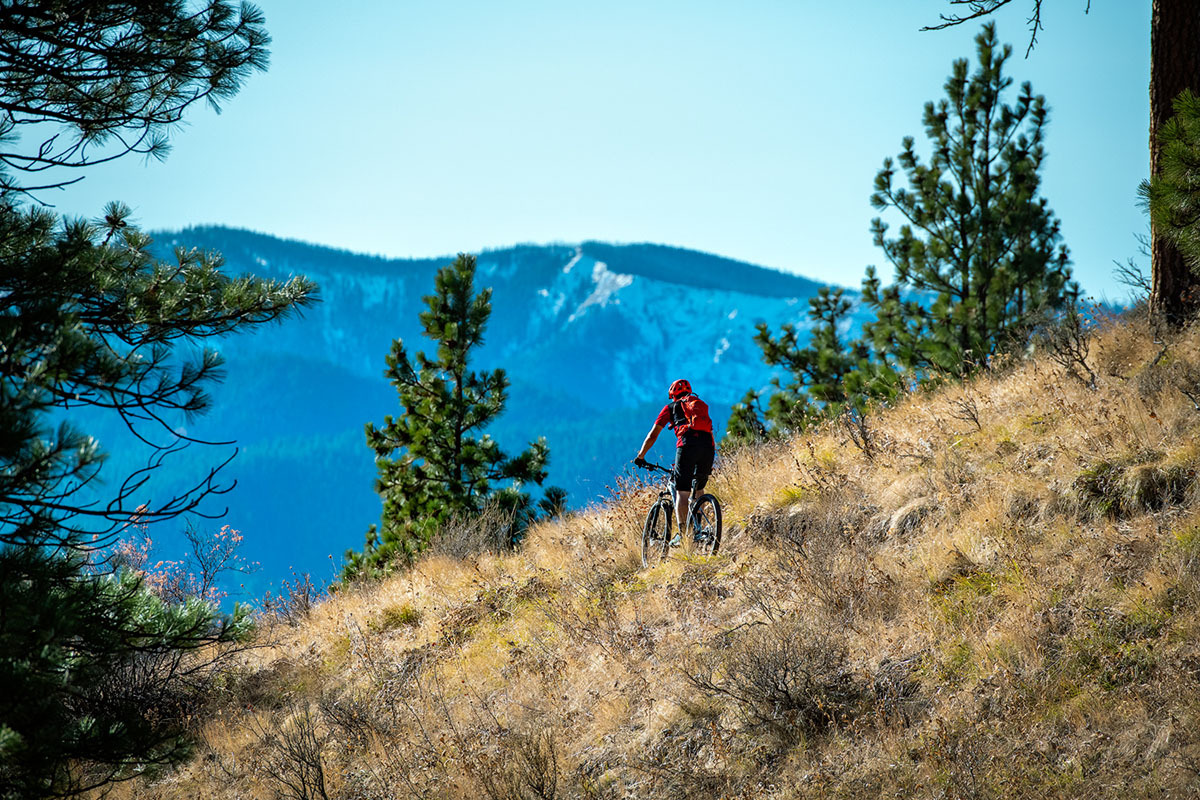
At first glance, it may appear that having more gears is a good thing—27 is better than 20, right? But that 27-gear ride (3 in the front, 9 in the rear) is actually far less intuitive to use. On the trail, you need crisp shifts to react to ascents and descents, and swapping from the big to small chain ring in the front is a real time killer—not to mention a lot of excess weight and complexity. Most modern budget mountain bikes now come with 9- to 12-speed drivetrains. In general, we find 9 to be perfectly functional for many uses, though with a limited gear range, they may struggle on longer rides that have reasonably steep climbs and descents. Bottom line, if you can find a bike with 10-12 gears for under $1,500, you’ll get a wider gear range that’s better suited for all-mountain riding.
One of the most notable improvements for bikes in the sub-$1,500 price range in recent years is the inclusion of disc brakes as the standard. As technology has trickled down from more high-level products and manufacturing processes have been simplified, mechanically operated rim brakes are becoming a thing of the past. Disc brakes offer considerably more stopping power, which is especially important when riding in muddy and wet conditions. There’s nothing worse than grabbing a handful of brake on technical singletrack only to find yourself squealing to a slow stop. But this isn’t just handy for those “oh crap” situations—in general, disc brakes require less effort to use, allowing riders to focus on the trail ahead instead of the brakes themselves. You’ll still find rim brakes on some cheap hardtails, but all the bikes here feature reasonably well-executed disc brakes.
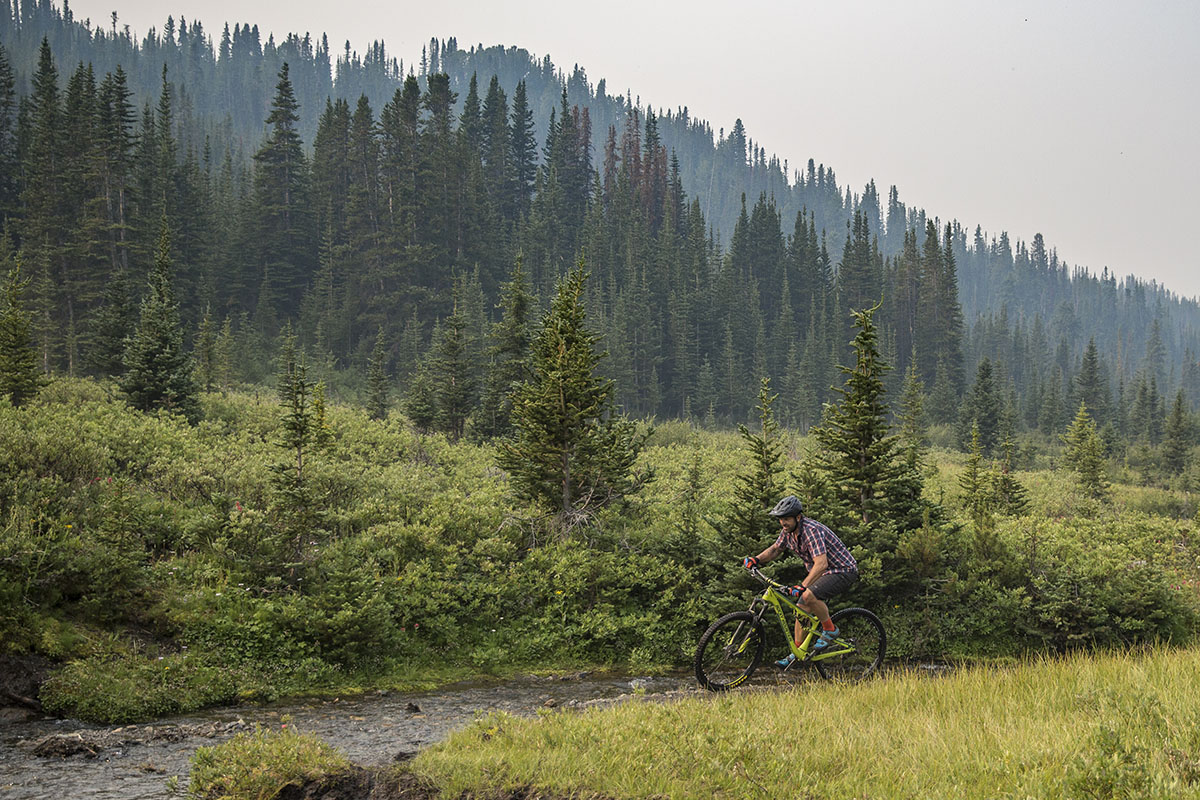
As a first bike or if you’re unsure about how committed you are to the sport, an option under $1,500 makes a whole lot of sense. But if you’re thinking about making a long-term purchase or live in an area that is low on smooth and easy trails—such as the rocky, muddy, and root-filled Pacific Northwest—it may be worth stretching the budget a little to get a more capable steed. As we cover in our round-up of the best mountain bikes under $2,500, spending that extra $500 to $1,000 does bring a good bump in quality and performance. For one, you get a much wider selection of full-suspension bikes, which are great for tackling technical terrain at speed. Additionally, weight is less of an issue, although you still aren’t seeing anything made with lightweight carbon fiber just yet. And finally, all components are of a higher quality, which translates to not just increased trail performance but also durability and lifespan. Our overall list of the best trail mountain bikes covers options priced up to $6,000. For a wider look at the market, see our article: How Much Should You Spend on a Mountain Bike?
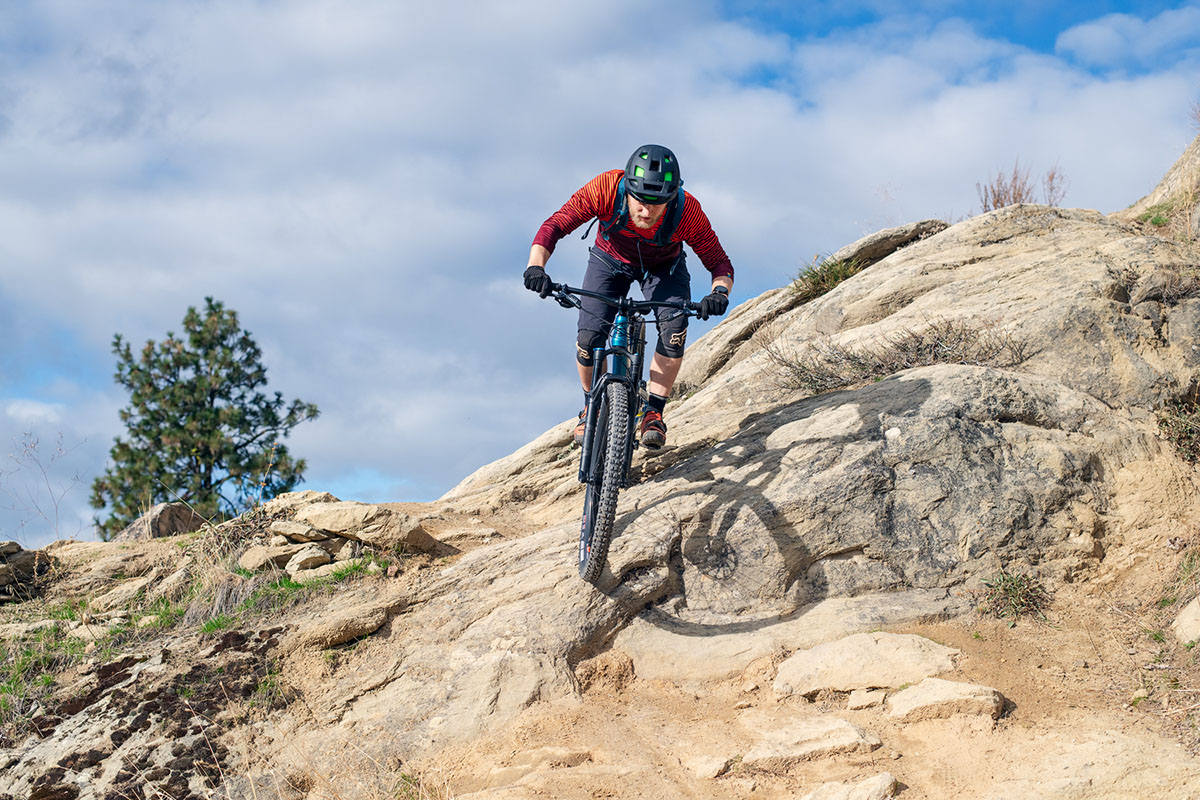
If you’ve been paying attention to the bike industry for the last few years, you’ll have noticed a shift in how bikes are being sold. Many big mountain bike brands like Specialized, Trek, and Giant now offer direct-to-consumer online checkout options, and large retailers like REI and Backcountry provide similar services for myriad other brands. Consumer-direct companies like Polygon and Ari have also staked their claim by cutting out the middleman entirely, leading to excellent designs at hard-to-beat prices. While we love the idea of buying a bike online for its low-pressure atmosphere and convenience, we think it’s important to consider a number of factors first. For example: Does the bike come assembled? Will you have to pay an oversize shipping fee? And most importantly: How can you ensure a good fit before ordering?
One of the first hurdles to buying online is getting the correct size. While nothing beats throwing a leg over a bike in person, companies almost always provide a size chart online that can be pretty reliable for nailing the right fit. Competitive Cyclist takes it one step further with their online fit calculator, which can be an invaluable resource. And if you currently own a bike, take note of how it fits and use that information for your next purchase. All told, the resources are there for you to get a well-sized bike without “trying it on.”
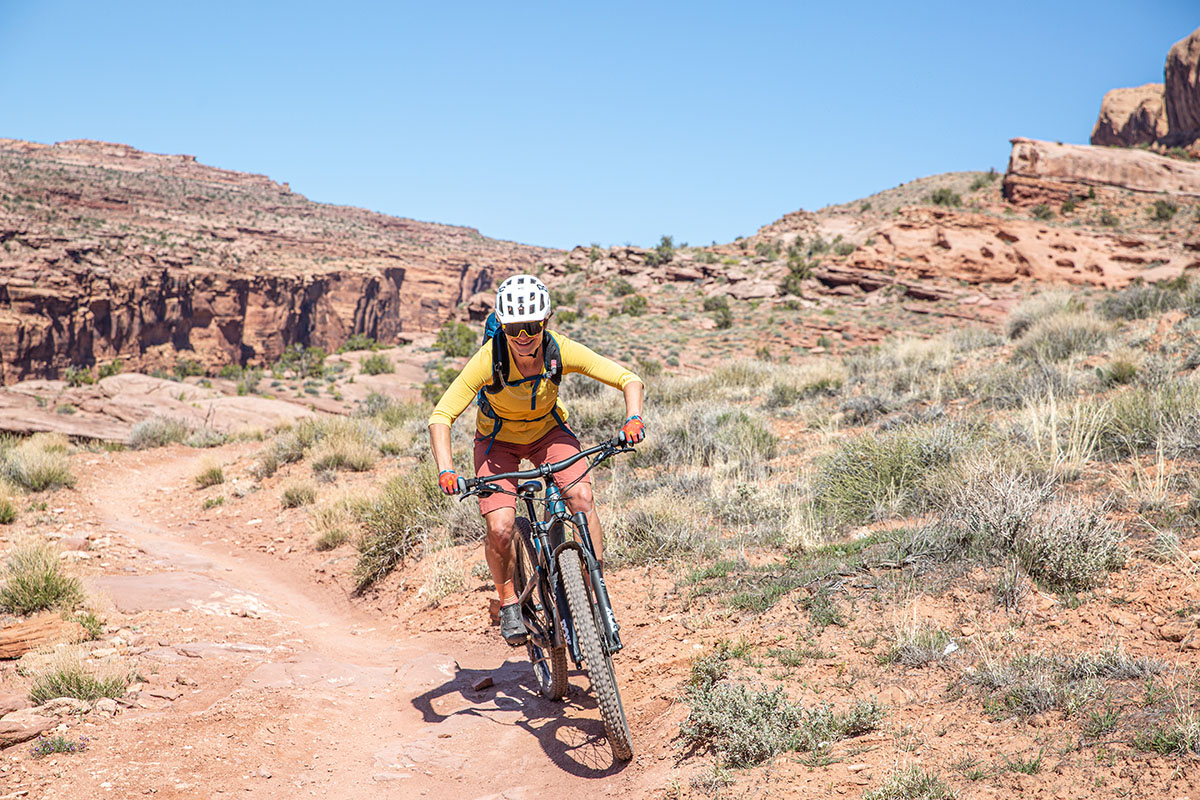
Once you receive the bike on your doorstep, it will require some assembly out of the box. The majority of companies include a few basic tools, but you still need a fair bit of skill and knowledge to safely put your new toy together. If DIY isn’t your forté, many bike shops offer build services, and online programs like Diamondback’s Ready Ride provide stellar customer service and tutorials. And at the other end of the spectrum are companies like REI, which allow you to purchase online and pick up in-store—this may be the best of both worlds as you can ensure a proper fit before taking the bike home. All in all, buying online is not as nerve-wracking as it might seem. Just make sure you take the time to do the research, find the right fit, and finally, hedge your bets by purchasing from a reputable retailer with a good return policy.
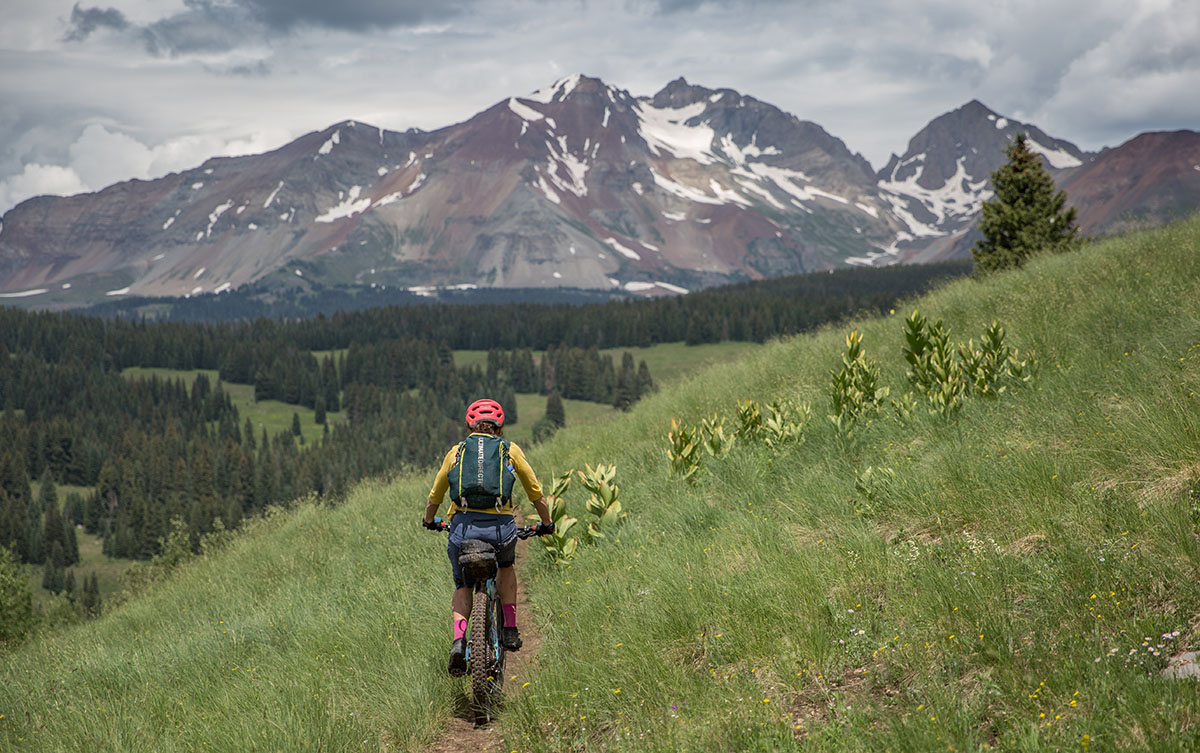
During the research process, there’s a very good chance you’ll consider and possibly start looking into purchasing a used bike. The benefits are fairly clear: Like a car, bikes start losing their value almost immediately, so you can save a good amount of money going this route (or get better components for the same price as new). In addition, shopping for a used bike cuts down on waste, and there are a number of ways to safeguard your purchase. The simplest is buying a former rental fleet model from a local shop. This gets you the assurance that the bike has been professionally maintained and serviced, and you’ll have a good idea of its history. It’s true rental bikes can be subjected to rough treatment, but you’ll often get a warranty with your purchase, as well as the comfort in knowing you can go back into the shop if questions or issues come up.
If you’re searching online marketplaces like Craigslist, Pinkbike’s BuySell, or Facebook Marketplace, there are some important things to consider. First, we advise choosing a relatively new bike to maximize lifespan (aluminum frames fatigue over time) and ensure you get modern components like disc brakes and updated geometry. In addition, it’s best to look at the bike in person to avoid purchasing an unmaintained money pit. If you’re mechanically inclined and familiar with bikes, you can check the frame for cracks and verify the condition of components like the drivetrain, suspension, brakes, and tires. These are very important to inspect as a cracked frame will make the bike unrideable, and replacing items like a front suspension fork can cost hundreds of dollars. If you’re uncomfortable giving this final check, most repair shops will take a look for a nominal fee. In the end, buying used involves a number of extra considerations, but if you’re willing to put in the effort and take on some risk, it’s a nice way to save.
Back to Our Top Mountain Bike Picks Back to Our Mountain Bike Comparison Table